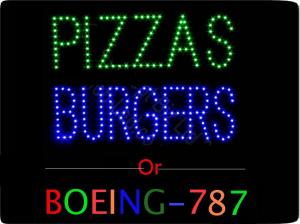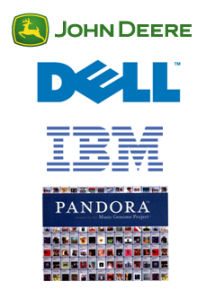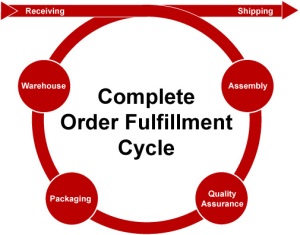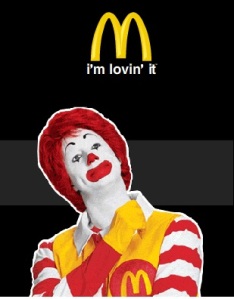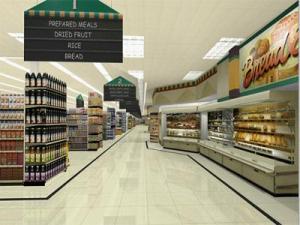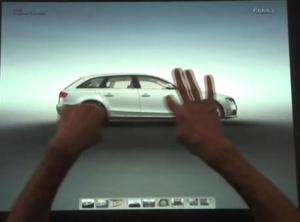Archive
Simplifying the rules of the game called “buying”
Making a right choice all the time is never so easy. It’s been almost a month that I am thinking about buying a Smartphone and finding it extremely difficult to make a decision. In the last few years we have witnessed a great technological advancement in shopping experience both in the real world and as well as in the virtual world but as a consumer I have never been satisfied. The reason for my dissatisfaction is because of the way the vendors puzzle the consumer like me about the product feature offerings and it’s pricing. The enormous amount of choices available in front of my eyes leads me nowhere and makes me think twice and compare each and every feature or offerings many times before making my decision. For instance, one phone appears to be longer than the normal pocket size and another phone looks quite bulky. Also, sometimes we have an unusual experience which takes us by surprise, like for instance some very good phones don’t come with adaptors whereas some other average phones come with wireless charging. This stops me to ask a question – is this a consumer issue or a phone vendor issue? If it’s a vendor issue then do they really understand Product Configuration concepts?
The answer to such an issue comes in many folds but first and foremost requirement for any vendor is to have a good product configuration solution. A unique solution that enables the vendor to reduce complexity and also read the minds of their consumers. Product configuration methodology can be explained in different contexts such as– the System Engineering process or the most contemporary Sales Configuration process. In this blog, my focus is more on the concepts behind the Product Configuration process and what is that drives the whole process via simple Smart phone analogy. In order to cater to the market needs, the vendor has to understand the psychology of the consumers and also have a good product configuration solution which will enable them to control the product diversity to an extent. The best-in class product configuration solution must follow certain principles or well known concepts in order to improve accuracy and thereby increase consumer satisfaction.
Let’s dive in to the product configuration world and introspect the well known product configuration concepts available in the current market – Year 2012.
Product configurations are basically unique set of features, sub features and they also define the quantity of each of the selected features. These features are decided based on the market needs. The choices available for the consumers are determined completely based on something called as rules. The rules drive the product configuration.
Rules are the backbone of any product configuration solution. These rules are predefined by the vendors during the system engineering process. In layman terms, rules are – for instance, if you are looking to buy a white colour 16 GB Smartphone then all the related information based on your choice are dynamically displayed on the web page for further selections. The rules are tied to the choices that you make and are often dynamically calculated upon your interaction. Rules basically come in two forms – the traditional program based rules and the modern constraint based rules. Constraint based rules are popular and because of its simplicity it is widely used in highly complex and very dynamic business environments. Constraint based rule engines are applied where configuration decisions are made dynamically based on inputs provided by the consumer.
Rules are expressed in several forms but some of the well known concepts are –
- Compatibility Rules – this type of rule allows you to express compatibility or incompatibility between choices
- Resource Rules – used to model production and consumption of resources
- Extension Rules – program based rules
- Preference Rules – set number of choices based on selection
Compatibility Rules
Compatibility rules are one of the most commonly used rules. The compatibility rule helps us define compatibility relationship between various Product Line features, Product specific features and also Product Variant features. They define a relationship between two features and there are numerous ways of defining it such as Incompatibility, Co-dependency and also based on Necessity. Let’s take the same Smartphone example to understand compatibility rules. Most Smart phones come with adaptors and we know that specifications for these adaptors are different in different countries. How can a vendor arrive at unique product packaging for each of these countries? The answer is quite simple – have a compatibility rule defined on adaptor for each of these countries. If the consumer chooses his country as United Kingdom then the product configuration process directly chooses an UK adaptor. This is achievable only when the Product Managers at the Smartphone companies define a compatibility rule or relationship between the country and the adaptors used. In another approach let’s assume the consumers were allowed to choose the adaptors themselves and they make some wrong selections. In such a case, the product configuration process dynamically displays a visual cue depicting the incompatibility between those selected choices and forces the consumers to reselect the features. The process continues as long as the consumer makes the right choices. In some cases certain features become pre-requisite, let’s assume the vendor decides to buy UK adaptor from a UK supplier and US adaptor from a US supplier. The vendor will now have another rule between the consumer’s country, adaptor and with the supplier. This rule defines that when the consumer chose his country as UK then it is a necessity for the vendor to buy the adaptor from its UK supplier only.
Resource Rules
As the name suggests resource rules refers to the way the vendors can add rules into the system that defines the initial, minimum and maximum number of resources that can be ordered. For instance the vendor decides to sell Smart phones with single as well as dual SIM cards. The single SIM card phone may use up only one slot whereas dual SIM phone has to use 2 slots. Accordingly the vendor would define a resource usage rule in the system with initial and minimum number of slots as 1 and maximum number of slots as 2. This rule comes into play when the consumer opts for a single SIM or dual SIM phone and based on the consumer’s choice the Product Configuration process logically helps the vendors to place an order to its SIM card slot manufacturers or suppliers.
Extension Rules/Program Based Rules
A traditional form of rule where we define programmatically all the probabilities and is basically used to perform validations. They are programs written to perform checks when other forms of rules cannot be used for validations. These programs run after all the other configuration rules have been validated and return a pass/fail at the end of its execution. For instance, the Smart phone vendor can check in their ERP system whether the 10 Mega pixel cameras are available. If the camera is available then the process returns a pass or fails.
Preference Rules
In some situations the vendor may require to provide multiple choices to its consumer. For instance, when the consumer chooses to buy a Smart phone, then the consumer would also be provided with a set of choices such as Bluetooth device, a Protective case, headphones etc as more options. This is also sometimes referred to as cross-selling which enables the vendor to sell other related products along with its main product. Preference rules basically help the consumers to include or exclude their choices and at the same time help the vendor to finally arrive at product configuration and thereby a unique bill of material.
Conclusion
The rules play a very important role in defining product configuration and they act as a backbone in defining a unique consumer bill of material. The vendor’s ability to sell their products in the market entirely depends on the strategy they opt in defining the product configuration rules. The vendors also lose customers if they fail to deliver simplicity in their offerings and the simplicity in selling is achievable only if the vendor wisely uses a unique product configuration solution and consumers always look forward to buy the best available option in the market and always from a trustworthy vendor.
Dassault Systemes provides a unique solution for such a vendor requirement and it’s called ENOVIA Variant Configuration Central. Check out this product on Dassault Systemes website here.
Best Regards, Ajit Kini
Small Fishes are Catching Up with Configuration Management Solutions
Small Fishes are Catching Up with Configuration Management Solutions in engineering industries.
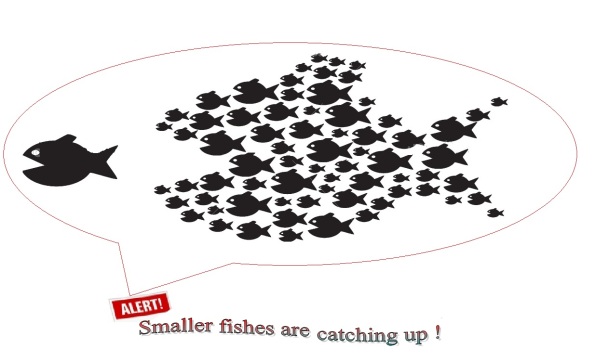
It feels good to make a comeback to the blogging world after hibernating for a good number of months. Through Perspectives blog my primary focus has been to reach out to industry thought leaders and explore different perspectives about product management processes. Its been tough to reach the good ones in the industry but it’s quite happening !
One thing boggled me this time was to find out and frivolously compare different configuration management solutions from PLM and non-PLM vendors available in 2012 market across engineering industries mainly the aerospace, automotive, high tech industries and the emerging verticals.
Its essential to note that some of the solution vendors market their solution as configuration management solution, some refer to it as variant configuration solution and some others simply refer as product configurator. Interestingly there is huge number of non-PLM vendors in the market who sell configuration management principles as a Sales Configurator or Product Configurator and surprisingly few CAD industries even refer to it as Bill of Material solution. Regardless of the different marketing names and offerings basically everybody sells Configuration Management principles.
According to one of my observation – it seems like here the small fishes (non-PLM vendors) have a greater edge in the market over the bigger fishes (PLM vendors) because of probably their unique selling point and wider focus and offerings. The bigger fishes have not been able to capitalize the current market due to their primary focus and perception of configuration management as ONLY system engineering solution per se whereas the smaller fishes have jumped several miles ahead by selling the CM principles as a Sales Configurator or Product Configurator.
I spent some time this week to google various configuration management solution(vendors) and collated a few findings in this blog post. Let’s have a look at some of the top PLM vendors in this market followed by what I call as small fishes – the non-PLM vendors.
As usual let me start with my favourite – Dassault Systemes !!!
Dassault Systemes offers CM as part of Portfolio Configuration Management solution and also as a BOM solution through ENOVIA Variant Configuration Central/ENOVIA Engineering Central. Some of the unique pointers of the solution are –
- Product Portfolio Definition
- Product Planning/Evolution
- Generic Product Architecture
- Configuration Rules
- Product Configurator
- BOM Generation
- Change Management
The most interesting fact about DS offering and the key differentiator is it’s 3D experience capabilities and its ability to integrate with best in class CAD solutions in the market.
Siemens offers Product Variation and Derivative Management solution through Teamcenter Enterprise knowledge foundation & Engineering process management and the unique pointers about their offerings are –
- Re-using product/process knowledge
- Facilitating mass customization
- Post-sales support
- Marketing and sales analysis
- Options (150 percent BOM) and all possible variants (100 percent BOMs)
PTC sells the solutions as Change & Configuration Management through Windchill PDMLink
- Rapidly find and access accurate change-related documentation,including a record of proposed changes
- impact of proposed changes on reliability parameters,regulations and product costs
- track changes for the next cycle of iterations
- Improve innovation by freeing up engineering time
- Reduce product cost by planning for effective changes to product configurations and minimizing product inventory
Interestingly there are a number of non-PLM vendors in the market who sell the configuration management solution as their sole product offerings. They are not classified among PLM vendors but they do sell CM solutions and have a greater market presence in the emerging industry verticals and some of them are listed below.
ConfigureOne offers Concept Enterprise Product Configurator and the unique thing about this product is its ease of use & presentation and they have some of inherent features of a CM solution such as-
- Rules Engine
- Pricing and Quotations
- Drawings and Visualization
- BOM’s, Routing, and Part Numbering
- Security and Workflow
Tacton sells the solution as sales configurator and they name it as TCsite. Some of the unique features as part of Tacton CM offerings are –
- Streamlines quote generation and quote management
- Can be used by the Internal Sales Force as well as Distributors and Resellers
- Integrates with TactonWorks for generation of CAD-drawings on-line
- Supports Enterprise Sales by letting all sales channels share the same source of information
- Designed to be easily integrated with surrounding platforms such as ERP, CRM, CAD, Visulization, and PLM systems
Cameleon Software also sells Product Configurator and the key features include –
- A dynamic constraint engine that drives real-time management of rules and options
- Interactive sales scripts supported by rich media
- Nested configuration to handle loops, packages and bundles
- Profile-driven branding, content, pricing and behavior
- 2D/3D drawing engine to generate production graphics
- Easy-to-use collaboration tools for configurable Product Lifecycle Management (PLM) with no programming skills required
Cincom Acquire provides the following as part of their Product Configurator solution –
- Shared knowledge in sales, manufacturing and engineering
- A tailored knowledge environment that fits your company’s needs
- 100% Accuracy on quotes, sales orders, BOMs and routings directly to sales without utilizing product experts
- Real-time Integration — Cincom’s business rules engine, Cincom Guru, enables integration with CAD, ERP and other enterprise applications including Microsoft Dynamics, SAP, Salesforce.com and Cinco
- Validation of design, configuration and product pricing
And to my surprise even IBM sells Product Configurator solution through Sterling Configure, Price and Quote and some of it’features of the product are
- Avoid order errors, such as incomplete configurations, inaccurate or constraint options selected for products
- Generate a custom Bill of Material
- Execute complex price and mathematical calculations
- Make context specific up-sell and cross-sell opportunities available
Finally to end this blog post – it was an interesting journey on google to find out various configuration management solutions available in the market in 2012 and one of the key observation is that the list of vendors in this area is ever increasing and it’s high time for the big fishes to have an eye over the small fishes.
Do let me know if I have missed out any good sales/product configurator vendors and I would be more than interested to know about them in the form of a comment to this blog post or an email.
Best Regards, Kini
PS: Some of the pointers mentioned here are directly reproduced from respective company websites. Please refer individual company websites for more information.
Pizzas, Burgers or Boeing-787….???
Its phenomenally similar ! ! !
If you may wish to, then every single thing in the universe could be configurable or rather in most common terms customizable. From eatables like ice-creams,burgers,pizzas to cars like Audi, aircrafts like Boeing-787, Formula 1 cars like McLaren to planning holidays to Switzerland or any of your favorite destinations. Everything is customizable ! ! !
If we look at it closely, then one common thing observable behind the scenes is the application of configuration management principles.
Lets try to find out How?
Its been the nature of we human beings to try something different always and that is what has lead us to think beyond sometimes. We seem to always have never ending preferences or a sense of satisfaction with what we already own. In such a demanding situation its very important for the vendors/retailers to bring about more variations in their offerings more frequently to remain competitive in the market.
Imagine you are an ice cream vendor required to keep the sales ticking regardless of the summer, winter or rainy seasons of the year. You would be very happy selling ice creams in summer whereas in winter and rainy you may require to be more strategic and smart. The first thing you would do is to have a detailed look at what are your current offerings for the ongoing summer season and do a what-if analysis on the offerings to come out with a practical offering plan for the next seasons. The situation becomes more demanding if you are a global player and require to sell across geographies according to variable prices and tastes.
Now, imagine you are an aircraft manufacturer or a formula 1 car manufacturer. Both are equally demanding environments and we do get to see conceptual similarities in these environments. Configurations, customizations, handling variations, performing what-if analysis, controlling changes, change approvals are some of the prevailing principles across these variety of businesses.
Dassault Systemes ENOVIA Variant Configuration solution together with other ENOVIA governance products like Program Central could be a perfect mix of solution to handle such demanding situations.
So from the above instances what are the key principles of configuration management that you and me can think of at this moment –
1.Product Planning
2.Product Definition
2.Product Variations/Variants
3.Product Configurations
4.Bill of Materials based on Configurations
5.Resolution or Change management
If you are interested about the solution then do have a detailed look at 3ds website.
Best Regards, Ajit
Beware : The Rules are NOT meant to be broken ! ! !
Rules are meant to be broken? Definitely not when it comes to Product Configuration. Configuring a product can be very complicated if a mediocre rule management system is adopted. Below is a list of basic advantages of using different kinds of rules which help in mass customization or Product configuration.
Basically, rules help in
- Increasing Reusability
- Reducing time
- Validating and Generating Preview BOM
Listed below are some of the rules that are put to use by various Product Configurator vendors. Again we have a high level classification as
- Programmable rules
- Constraint Based rules
Programmable Rules are those that are procedure based where every product configuration is achieved by writing complicated codes. For instance if you want to configure a mobile phone with camera you would be writing a method/function as
mobilePhoneWithCamera(){ if(mob==camera){genrateBOM();}}
Progam based approach would be very cumbersome and reusability is almost impossible to achieve. On the other hand, Constraint based rules help us overcome a lot of above mentioned issues. Constraint based engines are used where configuration decisions are made dynamically based on inputs provided by the customer. Constraint based rules help domain experts to easily and flexibly represent a constraint model. Constraints can be expressed in several forms as mentioned below:
- Compatibility Rules
- Inclusion/Exclusion Rules
- Resource Rules
- Feature Selection – May or Must selections of features
- Quantity Rules
In this case if we take up the same mobile phone with camera as an example, constraint based rules would provide the user a combo box with 2 options say “Camera” or “Non-Camera” to make the right selection. Upon selecting an option, rules (constraint based) are validated dynamically and Product Configuration can be created instantly.
Now my query to you is do you know any other advanced way of configuring a product with or without rules approach?
An interesting LinkedIn thread related to a query on rules can be accessed by clicking here.
With Dassault Systemes ENOVIA Variant Configuration Central, companies can define conceptual product definitions that can be reused across a multiple series of products, satisfy market specifications, and provide many possible optional capabilities. These conceptual product definitions serve as a framework for defining variant products that are configurable and drive the generation of design bills-of-material (BOM). This product provides both programmable and constraint based representation of rules. Check Out !
Best Regards, Ajit
Customer Centric Online Order Fulfillment In The Virtual World Is A Reality
Customer centric Online Order fulfillment in the virtual world is a reality. The number of customizable products sold on e-commerce websites and through automated systems has grown in recent years. There has been a growing need for modern industries to involve directly the customers in order fulfillment processes. Most industries till date use sales channels to listen and understand the customer concerns and then fulfill the orders within the committed period of time.
Off late, the ability to let the customers directly configure their needs has proved to reduce the lead time taken to fulfill the order and the cost involved. Having the customers choose their product variations comes with some uncertainties if the system is governed by a mediocre rule management module or a very generic configuration system with an average user interface. Let’s take a simple example where the customer customizes to order a mobile phone with camera and the online order management module bills him for a mobile phone without the camera. The constant evolution of the product or the introduction of new variants periodically offers a challenge for the automated system to live up to the customers’ expectations. A rich user interface together with a lifelike experience is the need of the hour for any online configurator to thrive in the competition.
According to MIT’s Smart Customization group Mass Customization aims to provide goods and services that best serve individual customers’ personal needs with near mass production efficiency. Mass customization refers to a customer co-design process of products and services which meet the needs of each individual customer with regard to certain product features. The
term was coined in 1987 by Stan Davis. Joe Pine made the concept popular and published the first dedicated book on it, Mass Customization: The New Frontier in Business Competition (1993).
Pandora.com relieves people of having to channel-surf through radio stations to find the music they like. Customers submit an initial set of their preferred songs, and from that information the company identifies a broader set of music that fits their preference profile and then broadcasts those songs as a custom radio channel. As of December 2008, Pandora.com had more than 21 million listeners who had created 361 million custom radio stations that play 61 million songs from 60,000 artists every day.
Customers of Bayerische Motoren Werke (BMW) AG can use an online tool kit to design the roof of a Mini Cooper with their very own graphics or picture, which is then reproduced with an advanced digital printing system on a special foil. The tool kit has enabled BMW to tap into the custom after-sales market, which was previously owned by niche companies. In addition, Mini Cooper customers can also choose from among hundreds of options for many of the car’s components, as BMW is able to manufacture all cars on demand according to each buyer’s individual order.
My Virtual Model Inc., based in Montreal, is changing the very nature of the buying experience. The software enables consumers to build virtual models, or “avatars,” of themselves that allow them to evaluate (by virtually trying on or using) products from retailers like adidas, Best Buy,Levi’s and Sears. More than 10 million users have already signed up for the service, and the early results are impressive: Land’s End Inc. reports an increase in average order value of 15% and a jump in conversion rate of 45%.
Dassault Systemes ENOVIA V6 Variant Configuration Central provides a competitive configuration advantage to the Engineer-To-Order, Build-To-Order and Configure-To-Order world by optimizing the design of products and their variations. It is a best-in-class system configure-n-engineer solution available in the market that provides a reliable platform for constantly evolving product. It helps in optimizing the design process of highly variant product by allowing design engineers to quickly create an Engineering Bill-Of-Material from a custom order or custom configuration. Basically builds up a connection between product marketing, system engineering and design engineering and thereby improves part reuse by minimizing feature proliferation and thereby reducing product diversity.
Death Of A Salesman – abstracting the role called “salesman”
In the virtual world, literally abstraction is a very common terminology. We as humans have a tendency to simplify things around us by making few things look abstract. In our day to day life we abstract a lot of things. For instance we use washing machines to wash our clothes,euro cleaner to keep the floors clean so on and so forth. Now in these contexts, what is abstraction? In my opinion the abstraction is the “role” itself . The role/person who washes the clothes or the role/person who cleans the floor. Since we see a lot of advantages in abstracting the role we continue with such a practice. One such abstraction can be found in an online sales configurator. Lets see how abstraction helps companies do sales or rather lets see what a best in class sales configurator can offer to ease the role of a salesman or literally abstract the salesman’s role.
To find out what a best in class sales configurator has to provide I went through a number of available sales configurators flyers from various vendors. Each vendor has provided unique features to make the sales configurator a one stop shop for all the sales configuration needs.
The following are my findings about all that a best in class sales configurator can provide to sell itself:
- Product catalog support
- Proposal Generation
- Quotation/Pricing/Costing
- Order Management
- Product Configuration
- Rule Management
- Product Data Management – System Configuration
- Reporting & Analytics
- Guided Selling
- SAAS – Technology Option
- Visualization/ Lifelike experience
- CRM & ERP integration
- Forecasting
The following are some of the well known vendors who have wide sales configurator offerings:
- Selectica – http://www.selectica.com
- Webcom Inc – http://www.webcominc.com
- Cameleon – http://www.cameleon-software.com
- Combinum – http://www.combinum.com
- Configureone – http://www.configureone.com
- Configit – http://www.configit.com
- Bigmachines – http://www.bigmachines.com
- Capterra – http://www.capterra.com
- Tacton – http://www.tacton.com
- Sterling Commerce – http://www.sterlingcommerce.com
- Cincom
- Firepond
- Ilog
- Access Commerce
- INFOR
- Oracle-EBS
Do help me further in exploring the best in class sales configurator offerings by posting your comments.
Best Regards, Ajit
Industry order fulfillment styles visited
In my quest to find out more about order fulfillment styles I have arrived at few findings/analysis:
1. Order fulfillment is basically a supply-demand driven process.
2. Various types of order fulfillment styles include some of the following:
- Configure-To-Order or Assemble-To-Order
- Build-To-Order or Make-To-Order
- Engineer-To-Order or Design-To-Order
- Quote-To-Order or Inquiry-To-Order
Lets take up Configure-To-Order style:I go to a fast food nearby and glance at the food menu and place an order for a takeaway(time constraint). When I am very hungry and when its lunch time I decide to have a 3 course meal.I choose minestrone soup and green salads as an appetizer, some white rice and Dal(Indian gravy) as a main course and finally among the desserts I would chose my favorite chocolate mousse. The hotelier would have raw food stocked up in his kitchen beforehand.Immediately after I placed an order, the chef at the kitchen cooked the raw food got packaged them in some containers and I bought it home and fulfilled my hunger. This whole process followed by the hotelier to provide me with 3 course meal can be viewed as Configure-To-Order process. In the manufacturing world Configure-To-Order is a method of manufacturing which allows you, or your customer, to select a base product and configure all the variable parameters associated with that product. Based on the configurable items on each quote or order, Configure-To-Order (CTO) systems typically generate the manufacturing routing and/or bill of materials based on features and options such as color, size, etc.This process is also known as Assemble-To-Order.
Lets take up Build-To-Order style: Build-to-Order has been the capability to quickly build standard or mass-customized products upon receipt of spontaneous orders without forecasts, inventory, or purchasing delays. Laptop purchasing is one of the best Build-to-Order examples. Build-to-order laptops, or Custom Laptops, are systems that are designed and built specifically to suit customer needs and wants. As such, every system would be unique to the person who orders through build-to-order process and would usually take just a few business days to assemble, test and deliver it at the customer’s door-step.
Engineer-To-Order or Design-To-Order: Engineer-To-Order is a order fulfillment style whereby finished goods are built to unique customer specifications. Assemblies and raw materials may be stocked but are not assembled into the finished good until a customer order is received and the part is designed.Products are complex with long lead times, typically months or even years.Unlike standard products, the customer is heavily involved throughout the entire design and manufacturing process.Engineer-To-Order companies build unique products designed to customer specifications. Each product requires a unique set of item numbers, bills of material and routing.
Quote-To-Order style:In a typical Quote to order style OEMs contact Suppliers for components through Request for Quotations. Suppliers in turn would check Inventory and contact their Suppliers if required for stock replenishment / supply price negotiation. Suppliers would then get back to the OEM with a Quote (known as Bid in certain cases). After resale price negotiation with the OEM the Supplier ships the required quantity to the customer. Post which the Order is placed and the invoice is generated. Such a style is also known as Inquiry-To-Order process.
It would be a great help if you can provide me links/references to the above discussed order fulfillment styles.
Best Regards, Ajit
Different tribes have different tastes
Different people have different tastes for food. We often go to restaurants and the waiter provides us the menu card and that is exactly when the greatest of all problem arises – to make choices.We have to make our choices to satisfy the taste buds and same time tighten our pockets.Often we end up ordering the wrong dishes. I had been to McDonald’s yesterday to have some burgers. It took me several minutes before I could place an order.The reason being not able to decide on the burger. The same thing happens even at Domino’s Pizzas or a lot of other eateries. The confusion is less when we stick to one particular item and be satisfied whereas its almost a nightmare when we don’t understand which one to order.”What if” we find a solution to such a problem.
In the Configuration management world we can term all the food items to be “Products” belonging to a specific vendor like McDonald’s or Domino’s. We could have configuration systems in place at these vendor locations and provide consumers with options to make their selection based on minimal inputs. For ex: Item – Burger, Cost – $10,Vegetarian/Non-Vegetarian,Taste -Hot/Sweet/Sour and then provide a list of choices that satisfy all these inputs.The consumer happily makes the best and cost effective selection and the vendor becomes known as a quick service restaurant.
Best Regards, Ajit
Connect to consumers in their digital life
My wife buzzed me yesterday afternoon and asked me to buy some vegetables and some groceries before I returned home after work. I was reluctant and my answer was a quick No :)which later cost me my dinner :(.The next day on my way back to office I was imagining if I could have done something about it. What if I had an online access to a vegetable market and I could shop some fresh vegetables and get them delivered instantly to my home. What if I could digitally connect to the store using my cell phone? The situation could have been all the more different. Isn’t it? A Dassault Systemes virtual store offering via 3dsywm led me to imagine the unthinkable. Check this out @ 3dswym
The product not only connects the consumers and the suppliers but also helps store owners to explore store ideas in Virtual Reality. Apart from these amazing offerings the product also comes with a Virtual Shopping Research tool wherein once the 3D interactive shelf/store is created and hosted in Virtual Reality, it becomes the perfect ground for consumer testing. After all they say – See What You Mean ! ! !
So what’s your perspective about a virtual store? Have you seen before something of this kind? Should we not have this at consumer disposal?
Best Regards, Ajit
Customer smartly says: It’s my car, so I-will-get-it-done-myself
Consumers express satisfaction only when it touches their heart. We go to a restaurant and place an order for the food that we love. A food fanatic would further approach the chef to tailor-make his/her pricy meal. The aptness to have a satisfaction in whatever we buy has been a human way for ages. Then why step back when it comes to buying a car ? is what prime car manufacturers like Audi,Volkswagen et al are raising as a question. Consumers are gradually realizing the value for their money and are preferring personalization instead of letting the local dealer decide what they’re going to buy. Have a look at Audi’s approach towards customer satisfaction using some of the advance technologies.
Its an age of low cost cars and its high time small/passenger car vendors also follow the suit so that we drive highly personalized cars. What is your opinion and have you come across any such advanced technologies to capture or rather satisfy the customer requirements or have been part of the configure-to-order fullfilment way of working. Do provide some comments.
Regards, Ajit
